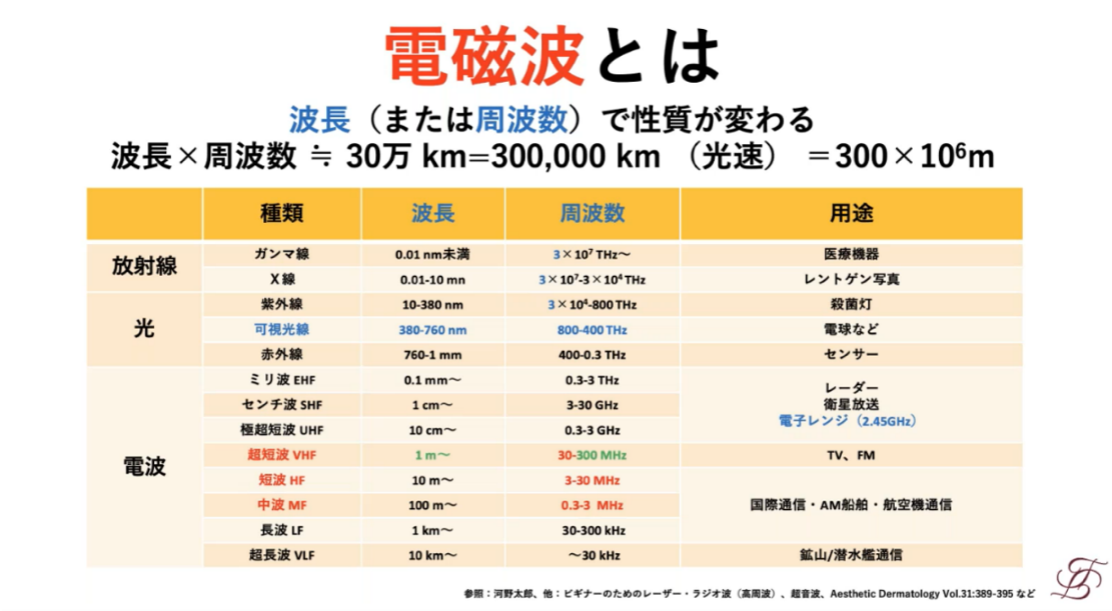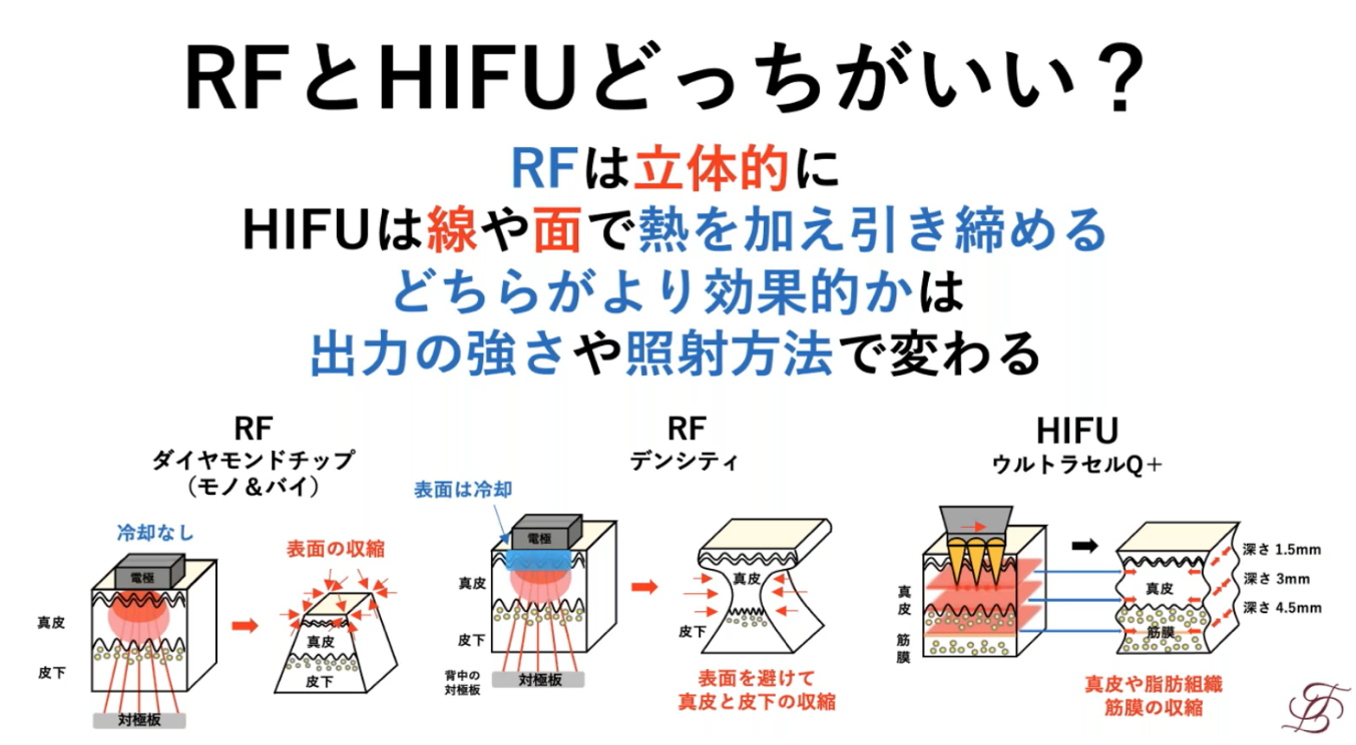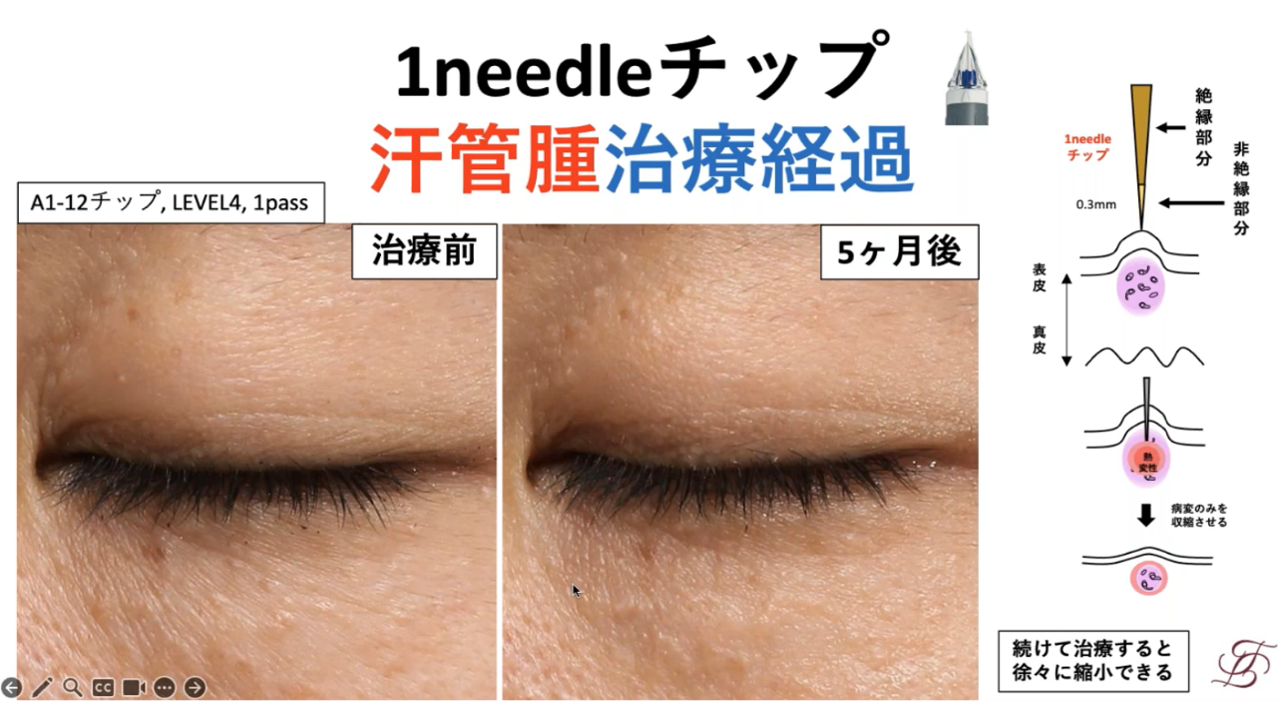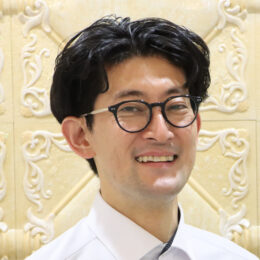
Thank you for viewing the website of Jeisys Medical Japan.
POTENZA improves various skin problems, is one of the most popular procedures, and is used in many clinics. Dr. Kenjiro Takei of Tenjin Takei Dermatology and Cosmetic Dermatology will introduce the differences between Potenza and HIFU, as well as the use of different Potenza tips.
- INDEX
- What is POTENZA? (3:15~)
- RF Therapy Equipment and Electromagnetic Waves (5:05~)
- Monopolar and Bipolar (9:07~)
- Differences between RF and HIFU and comparison with other devices (13:40~)
- Differences between various POTENZA Tips (18:50~)
- Difference between 1MHz and 2MHz (25:30~)
- Depth Settings (28:15~)
- McCoom (33:45~)
- Case Studies (40:53~)
- Summary (47:03~)
What is POTENZA? (3:15~)

POTENZA is an RF therapy device: as RF flows, the electric field switches intensely, and the frictional heat produced between dielectric water molecules warms the surrounding tissue. Many medical devices affect the organism through heat. The relationship between heat and the organism is as follows:
37-42°C (warm): Activation of biochemicals and stimulation of receptors
60-65°C (hot): Protein denaturation
Since the effect on the organism increases with time even at the same temperature, pulse width should be considered.
RF Therapy Equipment and Electromagnetic Waves (5:05~)

RF therapy devices use RF, which is a part of electromagnetic waves, for treatment. Electromagnetic waves include radiation, light, and radio waves whose properties vary with wavelength or frequency, and each has different uses as described below.

Monopolar and Bipolar (9:07~)


RF uses one electrode on the treated surface and a counterpolar plate on the other side. Monopolar works to the deep dermis, while bipolar works uniformly in the epidermis to the shallow dermis. Diamond tip allows for monopolar and biopolar serial irradiation and effective heat transfer to the subcutis.
Differences between RF and HIFU and comparison with other devices (13:40~)

RF tightens by applying heat in 3D while HIFU does so in lines or planes. Which is more effective depends on the output and irradiation method.

The 5 major skin treatments can be categorized in order of power output required: acne scars > pores > fine lines > texture > melasma.
A table describing the use and key points of Skin Needling, PICO Fractional, and POTENZA as skin improvement devices for the above major skin treatments is shown as a comparison document.
Differences between various POTENZA Tips (18:50~)

POTENZA has 5 main types of tips: diamond tips, SFA tips, CP tips, S tips, and 1needle tips. Depending on tip functions, the effects can be obtained according to the purpose, such as spots, dullness and melasma, fine lines, pores, acne scars, and sagging skin.
Difference between 1MHz and 2MHz (25:30~)

It has been found that 1-MHz waves tend to spread around between electrodes, while 2 MHz is more easily affect the confined area of transmission. If the same energy applied to a smaller area the pain will be more intense, so the settings need to be carefully selected.
Depth Settings (28:15~)

Demonstration tests of S-tip (bipolar setting) in pig skin have shown that thermal denaturation occurs up to 60-80% of the needle depth; the S-tip has two 0.25mm wide uninsulated areas, so piercing to a depth of 0.25mm deeper than the CP tip depth setting is effective.
Depth settings are made by site in five regions, A to E, as shown in the figure above. For the mode setting in our hospital, the depth sites are categorized into three major regions.
McCoom (33:45~)

McCoom is a formulation of PLLA, a polymer (dimer, to be precise) of polylactic acid, which degrades in one to two years. The particles are large, uniform, and round in shape, so they act on the skin with little strain.
McCoom’s Mechanism of Action: When PLLA in large particles is injected subcutaneously, macrophages form Foreign Body Giant Cells and attempt to isolate, dissolve, and remove the particles. In the process, the amount of collagen increases.
This is based on research findings that macrophages react differently depending on the shape of the invading foreign body (particle), and that collagen production by fibroblasts increases or decreases.
Case Studies (40:53~)

CP tip + McCoom: acne scars
→This is an indication case in which McCoom was used for rolling scars (gentle, not deep acne scars) with satisfactory results.

Diamond Tip: Sagging (Shopping Lift has been performed)
→Even with the standard setting in Manual Mode, pain is felt, but it is mild and can be performed without problems.

S-tip: Chloasma, etc.
→MLSM mode was used for mild irradiation. Although there is a difference from other models in pulse width, the result is that melasma becomes less noticeable.

SFA tip: Fine lines around the eyes
→Only 0.2mm epidermis was heated. We hope to use many of the attached tips to get some effect.


1needle tip: Hidradenoma and sebaceous hyperplasia
→1needle tip allows contraction only of the interior, whereas previously only the surface was burned and shaped using electrocautery or carbon dioxide gas. It reduces the volume of sweat duct tumors and sebaceous hyperplasia. Even better results can be expected by allowing time for them to be absorbed and removed.
Summary (47:03~)
The diverse types of POTENZA tips are introduced here, and DDR tips are expected to be introduced to Japan eventually. We hope you will make use of POTENZA.



